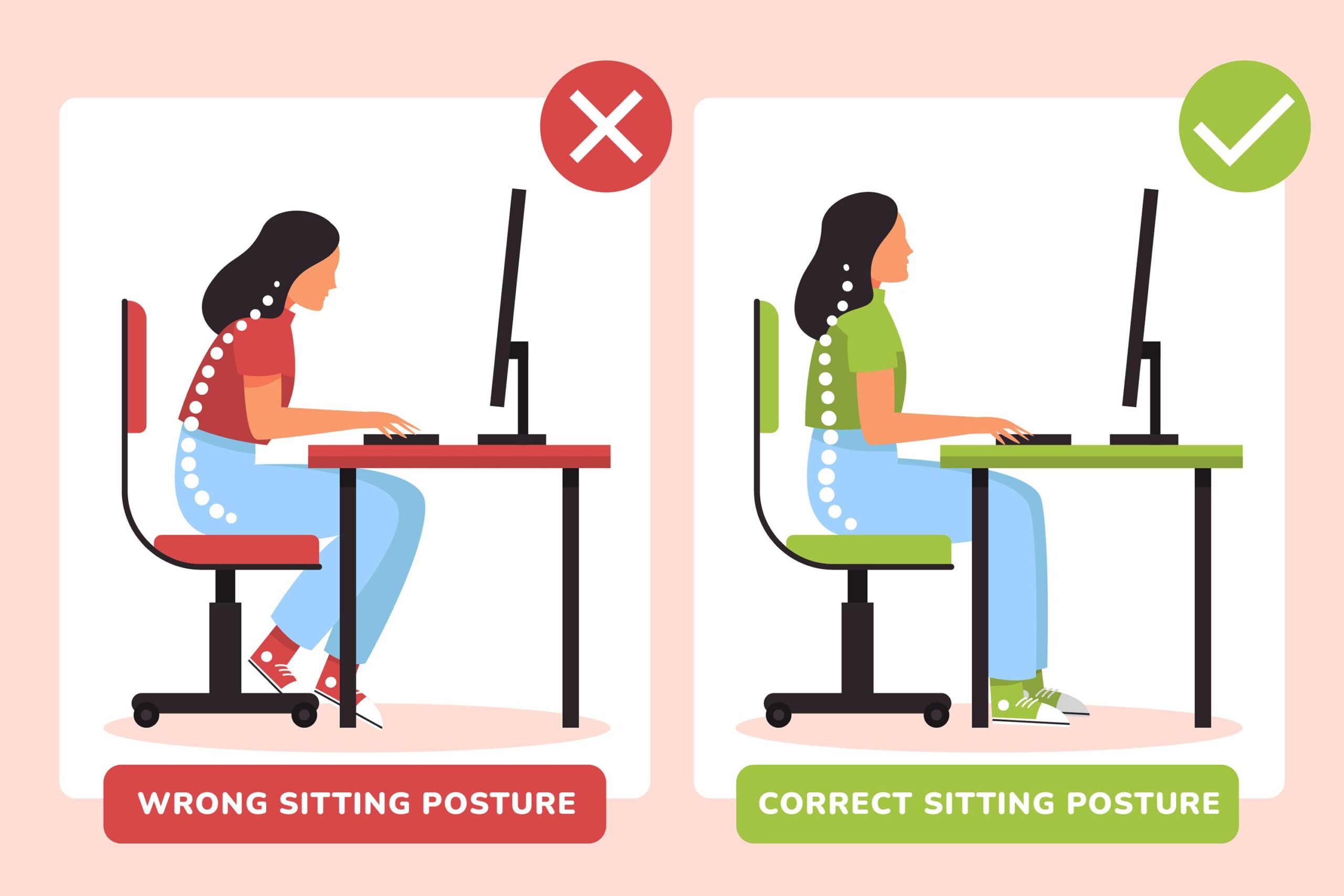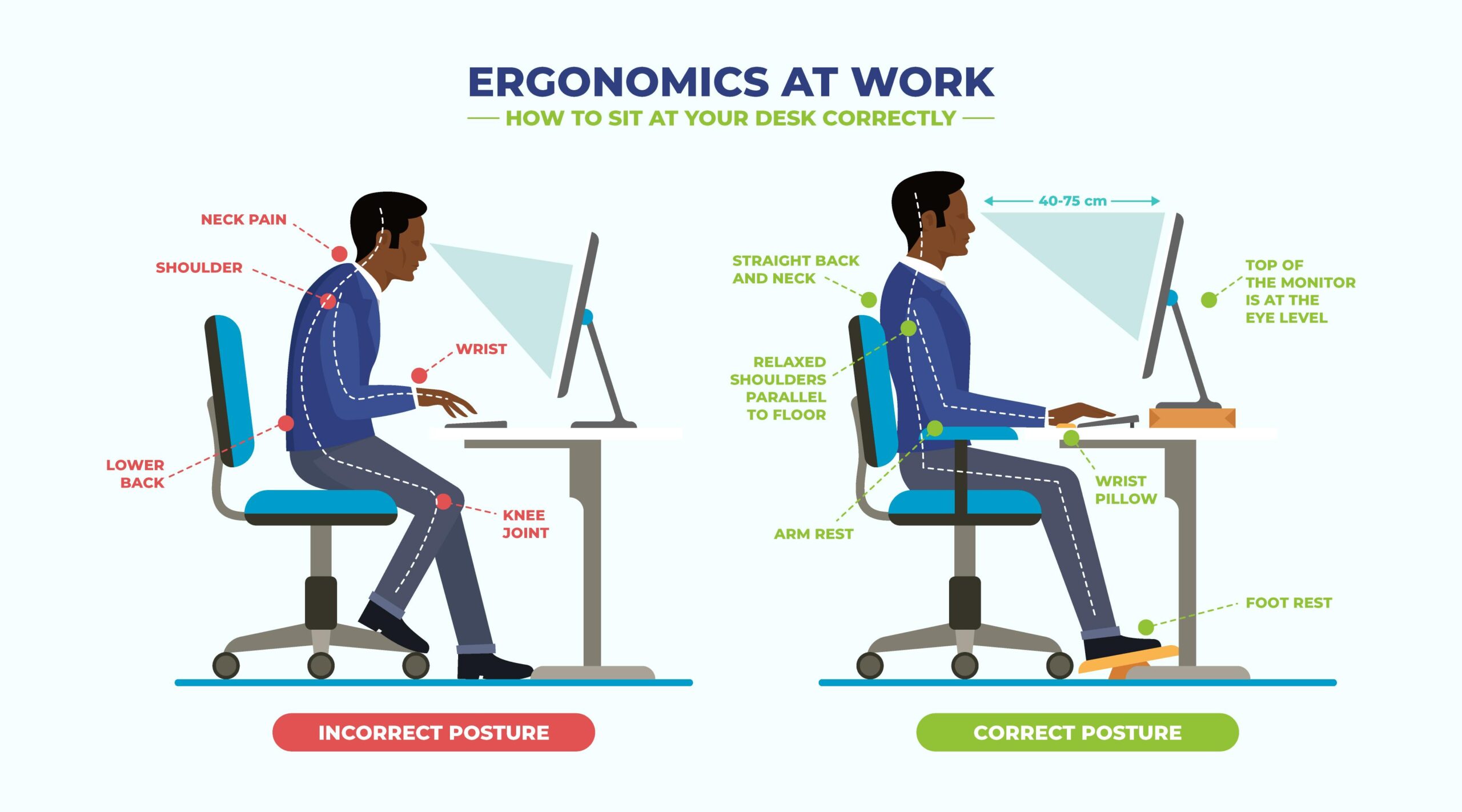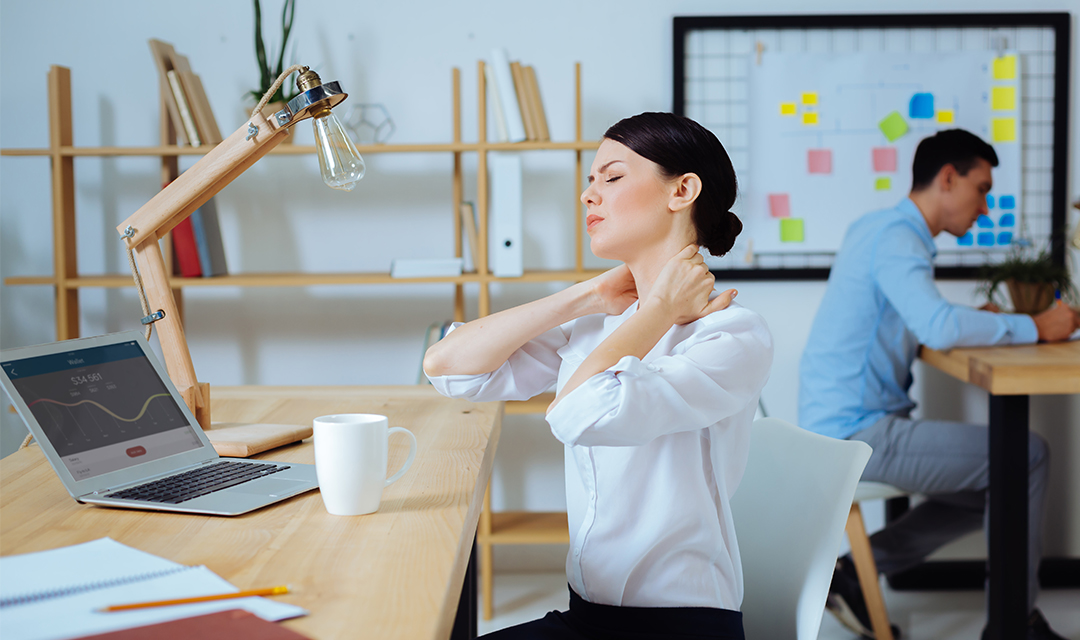Insight Orthopedics & Sports Medicine – In a typical work week at an office, people spend an average of 10 hours a day sitting. That’s a lot of time in front of the computer, commuting, or eating lunch – and it’s not even counting the hours spent sitting at home. If this sounds familiar, you have likely experienced varying levels of back, neck, and wrist discomfort from poor ergonomics that has impacted your productivity and quality of life.
Ergonomics refers to the design of workspaces to fit the capabilities and limitations of the human body. Proper ergonomics plays an essential role in preventing orthopedic pain and promoting overall well being in all aspects of life. Although the best way to avoid developing conditions like carpal tunnel syndrome or muscle strain is to limit sedentary activities, that’s not always possible. Fortunately there are a number of steps you can take to promote safety, comfort, and ease of use through ergonomics. Here are seven workplace ergonomics recommendations to consider if you are experiencing back, neck, or wrist pain.
Choose Adjustable Furniture
Sitting in a chair that is not adjusted to your body for an extended period of time can lead to a wide range of issues, which is why choosing the right chair can make a world of difference when it comes to orthopedic pain. The height of your desk and chair should provide adequate lumbar support, arm position, and backrest angle to allow for a neutral body posture. Additionally, you should choose a chair that provides adequate seat depth and supportive cushioning that meets your needs. Height adjustable or standing desks also provide many benefits, including reduced back pain, improved posture, and more energy. Plus, they can even help you burn calories!

Rethink Your Computer
Whether you use a single laptop or multiple monitors, the placement of your screen plays an important role in everything from back and neck pain to eye strain. In order to avoid neck strain, your screen should always be positioned at eye level. Screens should also be at an arm’s length away to reduce eye strain. Conversely, your keyboard and mouse should be close to your body to avoid overextending your arms. Specially designed ergonomic varieties are available to encourage a neutral wrist position and less strain while typing for long periods.
Consider Lighting
Adequate lighting can reduce eye strain and prevent headaches. Try to take advantage of natural lighting as much as possible. Not only will this help you see better than artificial light and make you more alert, it also comes with other health benefits like improved mood and circadian rhythm patterns. If harsh overhead fluorescent lighting is unavoidable in your work area, using a desk lamp, adjusting computer monitor brightness, avoiding sitting directly under a light fixture, and using blue light filters can all make a difference.

Organize Your Workspace
Something as simple as keeping frequently used items within easy reach can help you be more proficient and reduce the risk of back, neck, and shoulder injuries. Take time on a regular basis to keep your desk organized with a layout that minimizes the need for excessive reaching or turning. This includes labeling drawers and files for easy access, using desktop power outlets instead of reaching for wall outlets, and utilizing cord management tools to keep your cables tidy and prevent trip hazards.
Support Your Feet
Foot support is a very important consideration, especially for those who stand in one place for an extended period of time. Anti-fatigue mats allow you to stand comfortably by softening pressure on your feet, legs, knees, and back. They also come with other benefits, including improved blood circulation, better posture, and less fatigue. If your job involves long periods of sitting, under desk foot rests can also be beneficial by helping you remain in a neutral position and promoting better circulation.

Practice Proper Lifting Techniques
Whether you are lifting boxes or moving weighty supplies, even office jobs can require lifting from time to time. To prevent back injuries, familiarize yourself with proper lifting techniques and always use lift assist tools, such as hand trucks and push carts, whenever possible to reduce the physical strain of lifting heavy objects.
Remember Physical Activity
One of the most effective ways to prevent orthopedic pain and injuries is regular physical activity. Taking frequent breaks and moving around improves your posture, promotes healthy joint movement, reduces headaches, and even helps you clear your head and improve your mental health. Physical activity doesn’t need to be time consuming. Something as simple as standing and stretching throughout the day or taking a quick walk on your lunch break can lead to meaningful results.

Proper ergonomics can play a crucial role in preventing back, neck, and wrist pain while also creating a more comfortable and productive work environment. If you are experiencing orthopedic pain, the team at Insight Orthopedics & Sports Medicine can help. Contact us today to learn more about our services and schedule an appointment.
FAQ
Q: What causes Carpal Tunnel Syndrome?
A: Carpal Tunnel Syndrome (CTS) occurs when the median nerve, which runs from the forearm to the palm of the hand, becomes pressed or squeezed at the wrist. It is often caused by repetitive hand use, poor wrist placement from activities such as typing, trauma or injury, and genetics.
Q: Can desk chairs cause back pain?
A: Yes. Desk chairs that are not properly adjusted for the individual user can cause back pain. Desk chairs should promote proper posture, be placed at the correct height, and provide adequate lumbar support and seat cushioning.
Q: What stretching exercises can I perform at my desk to prevent pain and discomfort.
A: There are a number of simple at-work stretching exercises that can help you prevent pain and discomfort. Gently tilting your head from side to side and front to back, rolling your shoulders in a circular motion for 10-15 seconds, and seated spinal twists (sitting straight in your chair and twisting your torso to one side and then the other) are all effective.

